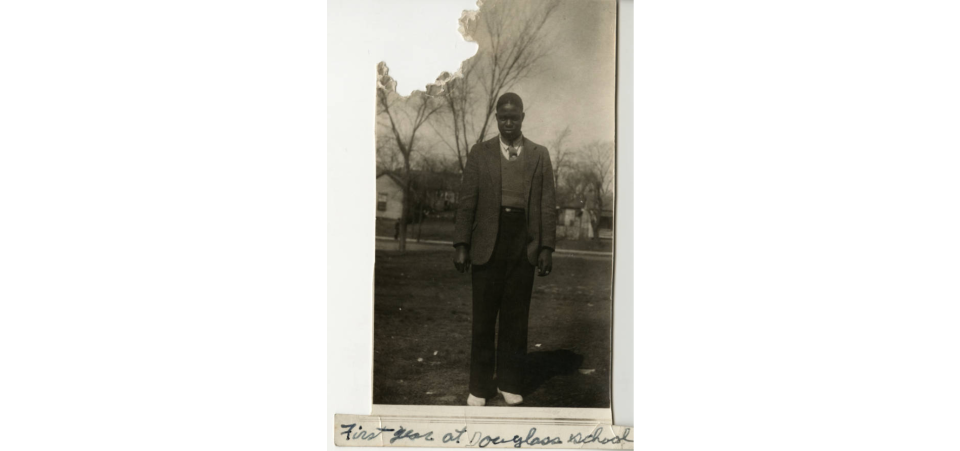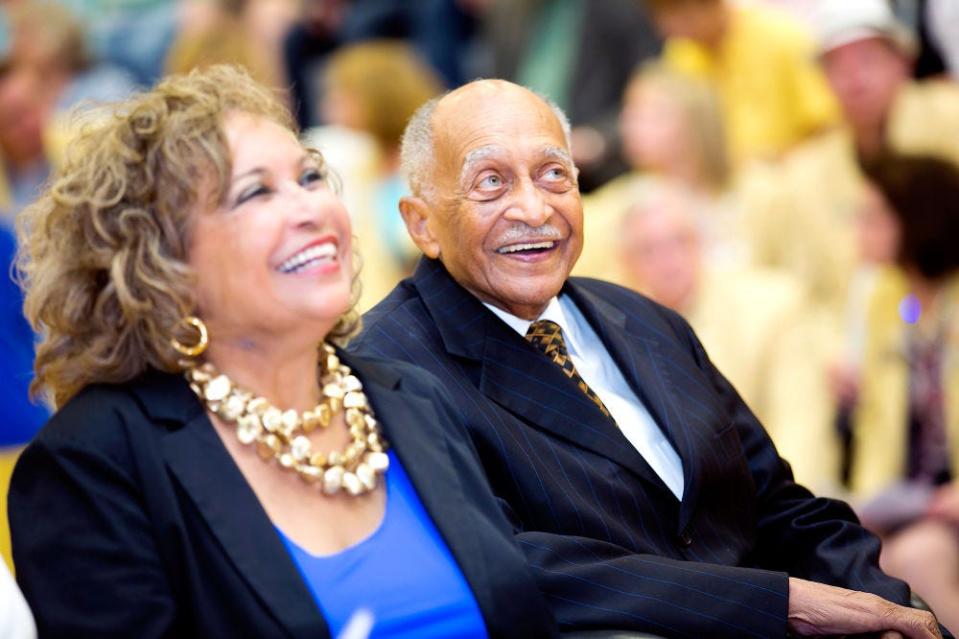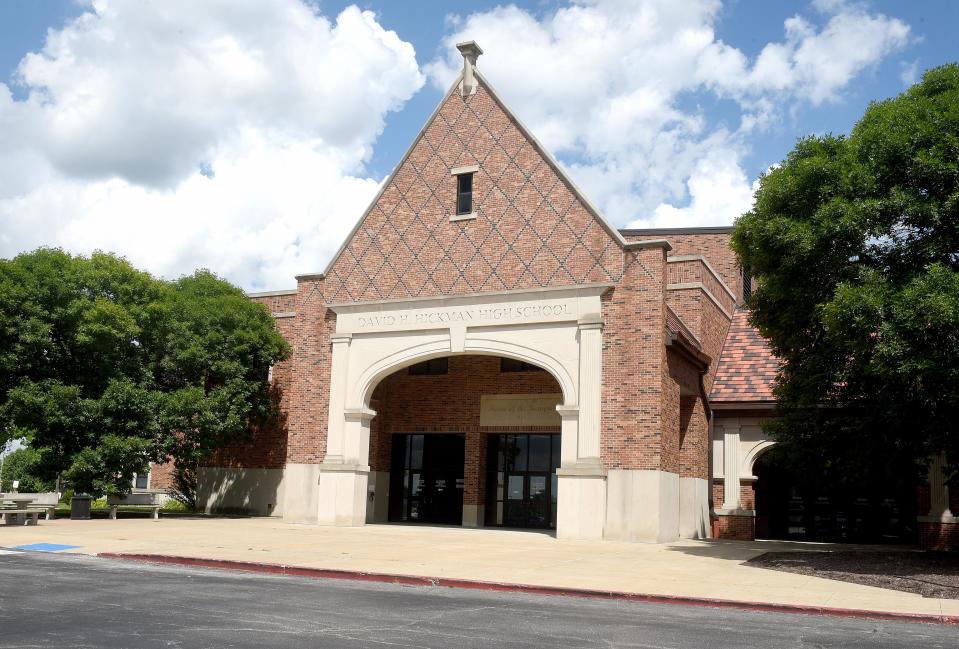Columbia Public Schools marks 150 years, with help from the community

In a December 1872 Columbia community meeting, participants voted to form a city school district.
At another community meeting on Jan. 4, 1873, 250 residents gathered during a snowstorm to elect the first school board. Thus, what is now called Columbia Public Schools was born.
The events are described in the 1978 book "A History of Public School Education in Columbia" by retired University of Missouri journalism professor Roger Gafke.
The school board plans a celebration of the district's 150 years at its January meeting.
Since writing his book, Gafke said he has watched the school district as a community member.
"I think it's fun to celebrate the 150th anniversary," Gafke said. "We as a community have supported this institution, so let's be proud of that."
There were township schools in Columbia before the Columbia School District formed, according to Gafke's book. The University of Missouri was involved in the schools during some of that early period.
"The Columbia community has supported the concept of public education since its early days," Gafke said. "The community set out by the end of the 1830s with the elements of an education system. I think the community can rightfully be proud of its heritage of support for public education."
A 'proud march' toward public education
During the 1873-74 school year, the district employed eight teachers working in three locations, Gafke wrote. By 1878, there were 118 students in a former Methodist church building at Sixth and Broadway.
Next was a school building at Eighth and Rogers, where there has been a school since 1881. It was built in five months after a public vote. Its cost was $12,500.
"There were four classrooms on the ground floor, three classrooms and a large meeting room on the second floor," Gafke's book reads. "Light for the classrooms was provided through 60 windows. Each of the rooms was heated with a separate coal-fired stove."
The school dedication was a town celebration, Gafke wrote.
"With the accompaniment of the Columbia brass band, the teachers, the 186 pupils, board members and other citizens joined 'a proud march' from Sixth and Broadway up the hill to the new school," read Gafke's account from historical sources.
Jefferson Middle School is currently on the site, with the current building dating to 1911. A historical marker erected in 2014 noted the location's history, first as Columbia Public School, becoming Columbia High School in 1900. It became Jefferson Junior High School in 1927 when Hickman High School opened.
It is undergoing extensive renovations now, but the 1911 structure remains at its center. Gafke said he sometimes drives by the building and sees the ongoing construction.
"That has been a resilient building," Gafke said.
How Brown v. Board of Education changed Columbia schools
Douglass School initially was established for Black students during segregation. The current 1916 building underwent extensive renovation during its centennial year.
The school is named for Black abolitionist Frederick Douglass.

The 1954 Brown v. Board of Education U.S. Supreme Court decision ended segregated schools, but the process was gradual in CPS, Gafke said.
School officials reflect the community and have a "show-me" attitude, Gafke said.
"Let's not be the first to test something," Gafke said has been the attitude of school officials. "That has been a characteristic of the school district for a long time."
District leaders like to develop a consensus, he said.
Jim Ritter was CPS superintendent from 1998-2003, and served again as interim superintendent from 2008-09. He came to CPS as an American History teacher at Hickman High School in 1959. He also served as assistant and associate superintendent.
"We were growing tremendously," Ritter said of the school district during his time. "We were growing so rapidly."
In 1967, Ritter said officials became aware of marijuana and drug use among students. The Vietnam War also was a key issue.
"There was tension," Ritter said. "We had the racial issue coming to a head. It really stirred some animosity. We were kind of playing it by ear to try to handle the situations," Ritter said.
At the time, the six Hickman High School cheerleaders were elected by popular vote. As a consequence, there were never any Black cheerleaders. Students and parents complained.
A meeting of administrators was held at Hickman. Outside, Ritter said he could hear people singing "We Shall Overcome."
The decision was to expand the cheerleading squad to eight members. The seventh-highest vote-getter was a Black student. The eighth cheerleader was another white student — Claire McCaskill, a future U.S. Senator from Missouri.
"The tension remained for other reasons," Ritter said. "People became very anti-establishment."
The school district established home-school visitors, now also called home-school communicators. Among the most effective of those was Beulah Ralph, Ritter said.
"Beulah really taught us a lot," Ritter said.
He said she taught the oblivious white administrators about how Black students viewed the world they were in.
One of the newest district schools is named for Ralph.
The home-school visitors served as liaisons among parents and students and the school district. It was an innovative idea, Gafke said.
"That was really responsive to the issues," Gafke said.
Others who were instrumental in steering the school district in the right direction with race relations were Eliot Battle and his wife, Muriel Battle, Ritter said. Their names are on Battle High School and Battle Elementary School.

'Moving the school district forward'
Ritter worked closely with Russ Thompson, the longest-serving CPS superintendent, who led the district for 18 years beginning in 1976. Hank Fisher was deputy superintendent for finance.
The three always had fun together despite tough issues and they remain friends, Ritter said.
"It was a good time," Fisher said. "It was a time we were moving the school district forward."
President Ronald Reagan visited Columbia schools on March 26, 1987, in recognition of the academic achievement of students at Hickman High School.
"If America is to be what it should be in the 21st century, then it's going to need a lot of schools, good schools," Reagan said at Hickman, according to the Reagan Presidential Library.
"And Hickman, I'm pleased and proud to tell you, is one of the best. I appreciate your principal, Kenneth Clark, inviting us here, and the faculty and all of you and the citizens that have made us so welcome here in Columbia. But it is true, the schools in Columbia are renowned and have been chosen and awarded honors for the progress that has been made in academic quality. And so, I'm delighted to congratulate all of you on that."

Thompson said he was invited to the White House to meet Reagan and also with President George H. W. Bush.
Eliot Battle was "a really wonderful leader," Thompson said.
"We tried to assemble the strongest teaching staff and support staff," Thompson said. "The district enrollment was increasing rapidly."
They were trying to keep up.
Under Superintendent Bob Shaw, the first classroom trailer went in at Rock Bridge Elementary School to manage enrollment, Thompson said.
More trailers followed, but recent construction projects have whittled the number of trailers down to a slim few, including a recent addition at Rock Bridge Elementary. Before the addition, there had been six trailers there. They're all gone now.
"I'm proud to be part of an exceptional community and excellent school district," Thompson said.
Part of his job was communicating with the public about the need for projects included in bond issues, said Fisher.
"We made many, many presentations to anybody that would listen to us," Fisher said. "We made a great effort to do that. We tried to be very up-front, very transparent about the needs."
The school district has always been student-centered and it's good to celebrate, he said.
"The school district is a very important part of this community and to maintain good schools requires good leadership," Fisher said.
The Great Depression resulted in more vocational programs in CPS, Gafke said. Likewise, Russia's launch of its Sputnik satellite spurred more courses focused on science and math.
In more recent history, Robert E. Lee School, named after the defeated Confederate general and built in 1904, got a new name in 2018. After white supremacists marched in Charlottesville, Virginia, the autonomous school board sought a name change. There was pushback from some.
It's now Locust Street Expressive Arts Elementary School.

There was nothing in historic documents about the reasons for building a school named for Lee and a school named for Ulysses Grant, Gafke said.
"Missouri was a very divided state," Gafke said. "But times move on, and you have parents saying 'I'm uncomfortable with the name of the school.'"
Student success and community support
CPS has had an outsized number of Presidential Scholars. Only two from each state are selected each year and in the first year it was awarded, Hickman High School student David Wheeler was a winner. This year, Rock Bridge High School senior Kyle Chen was the 23rd Presidential Scholar in the district's history.
The honors now extend to a Rhodes Scholarship for Hickman graduate Veer Sangha. Sangha, a senior at Yale College, is majoring in computer science, statistics and data science and has four peer-reviewed journal articles. One of 32 chosen, he will study at no cost for the next two or three years at the University of Oxford in England.
Students in Columbia Public Schools speak 74 languages, said district spokeswoman Michelle Baumstark.
Decisions always are made with input from the public, said current Superindent Brian Yearwood. He used the recent World Cafe as an example.
"Our school district's success is a direct impact of our community supporting our schools," Yearwood said.
He used Sangha's award as an example of the achievement CPS students have attained.
"This can only continue with support from our community," Yearwood said.
Looking back on his time as a school administrator, Ritter said too much time was spent on dress codes and monitoring hair length.
"In retrospect, it was a waste of time," Ritter said. "There were a number of things we spent a lot of time on that didn't really matter."
Columbia residents are involved in the schools, Ritter said.
"Columbia is the kind of community where citizens were very active," he said. "People are extremely supportive of schools as long as you're doing a good job."
January's school board meeting will be special, Yearwood said.
"We've been successful for 150 years," Yearwood said. "It speaks to the quality of our school district and staff and school boards."
It's important to mark the anniversary, Gafke said.
"The school district is a creature of the community," he said. "The school district seems to have responded to the needs and wants of the school district pretty well."
Roger McKinney is the Tribune's education reporter. You can reach him at rmckinney@columbiatribune.com or 573-815-1719. He's on Twitter at @rmckinney9.
This article originally appeared on Columbia Daily Tribune: Columbia Public Schools endures for 150 years in good and bad times

